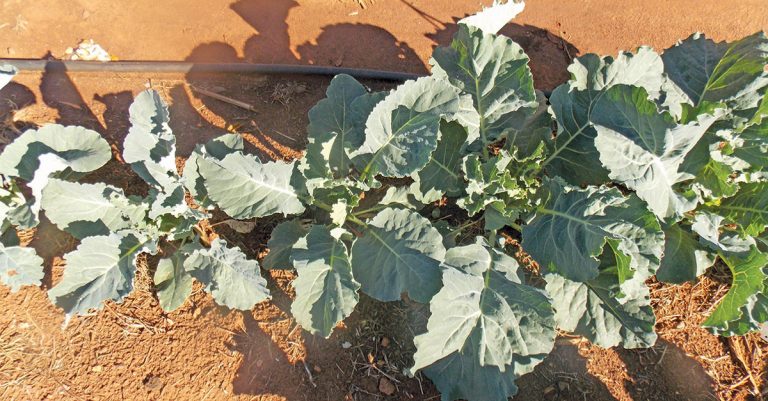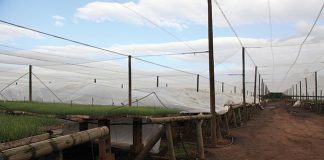
Photo: Bill Kerr
All too often, I come across farmers who do not irrigate practically or economically. Applying too much water ends up wasting money, while watering too little can stress the plants.
Many farmers use a weekly irrigation schedule: that is, watering once a week for a set amount of hours. But they do this without determining how much water the crops actually need.
To begin with, you need to know how much water is delivered per hour through the irrigation system. The next step is to determine how deeply the water penetrates the soil.
The rule of thumb is that 1mm of irrigation wets 1cm of soil. So, for example, 25mm of irrigation will wet the soil 25cm deep. But keep in mind that this is a very rough guide.
The soil moisture content at the time of irrigation will also influence how deep the water will penetrate. Carry a garden trowel in your vehicle and dig into the soil frequently to determine its moisture status.
You can calculate the delivery per hour easily by using the information provided by the irrigation equipment supplier. You can also set empty food cans in various positions around the sprinklers and then measure the depth of water in the cans after irrigation. Comparing the cans will also help you establish whether the soil is being uniformly irrigated.
To get the irrigation right, use a garden spade, preferably a narrow one, and dig into the soil to the depth you need to irrigate. The next day, dig again after irrigating and check how far the water has penetrated.
You can then calculate how long you need to irrigate in order to reach the required depth.
Wasting water
Any irrigation beyond the target depth is a waste of water and electricity. Moreover, irrigation beyond the reach of the root system will carry nutrients, especially nitrogen, to a point where they will be lost to underground water.
Too little irrigation, on the other hand, will prevent the crop from sourcing nutrients beyond where the moisture reached. (Obviously, if far too little water is supplied, the plants will become water-stressed as well.)
The key is to get away from a rigidly scheduled cycle of irrigation, as water loss from the soil depends on air humidity, wind and temperature, which are variable. The stage of crop development also plays a role in the amount of water lost through transpiration and in the depth of the plants’ root systems.
Learn to read the crop; it will indicate when it’s thirsty. Make a mental note of leaf colour and condition at the edges of the land.
Apply a light irrigation after a bout of rainy weather, as plants become soft under these conditions and will stress earlier. Also, if you wait too long after rain to irrigate, everything will dry at the same time and some crops may become stressed before you reach them.
Bill Kerr is a vegetable specialist and breeder.











